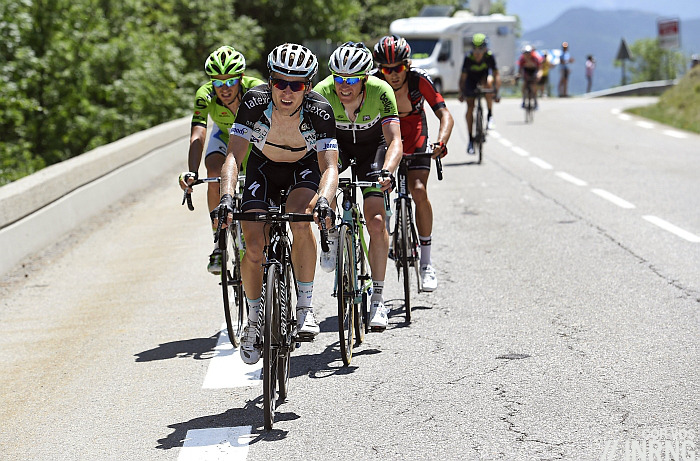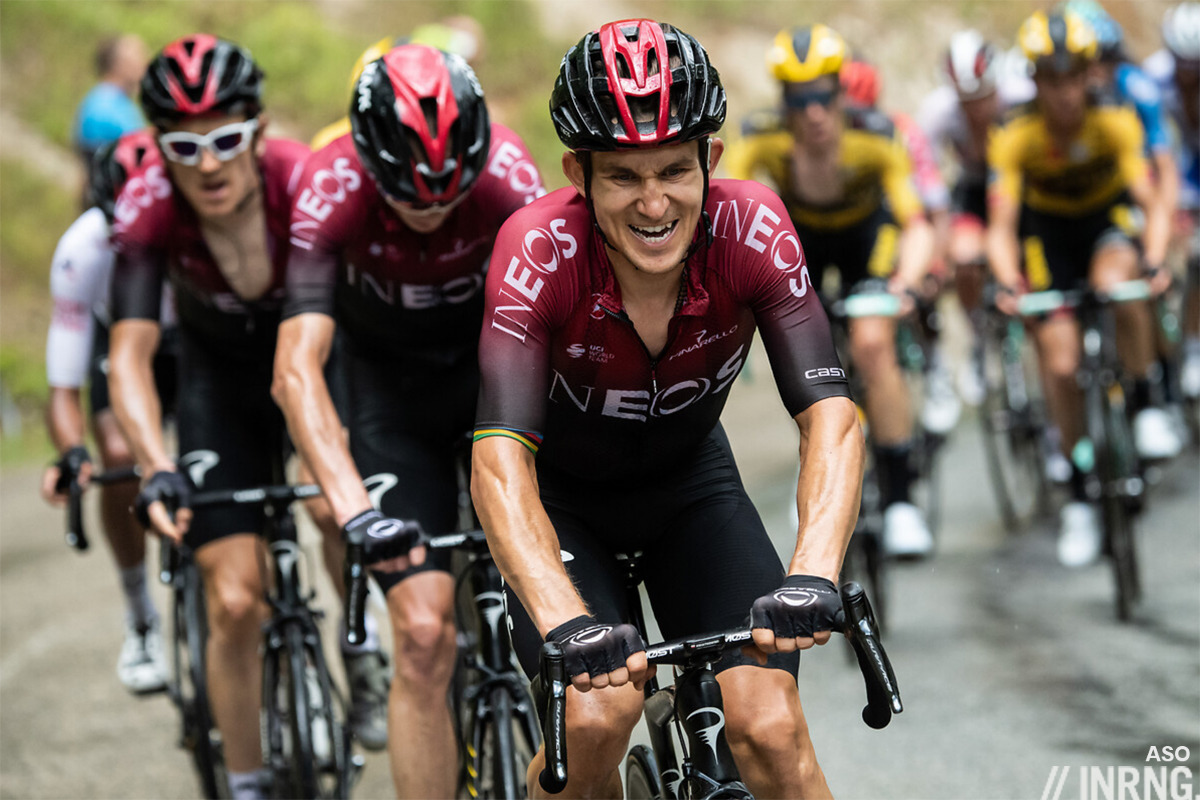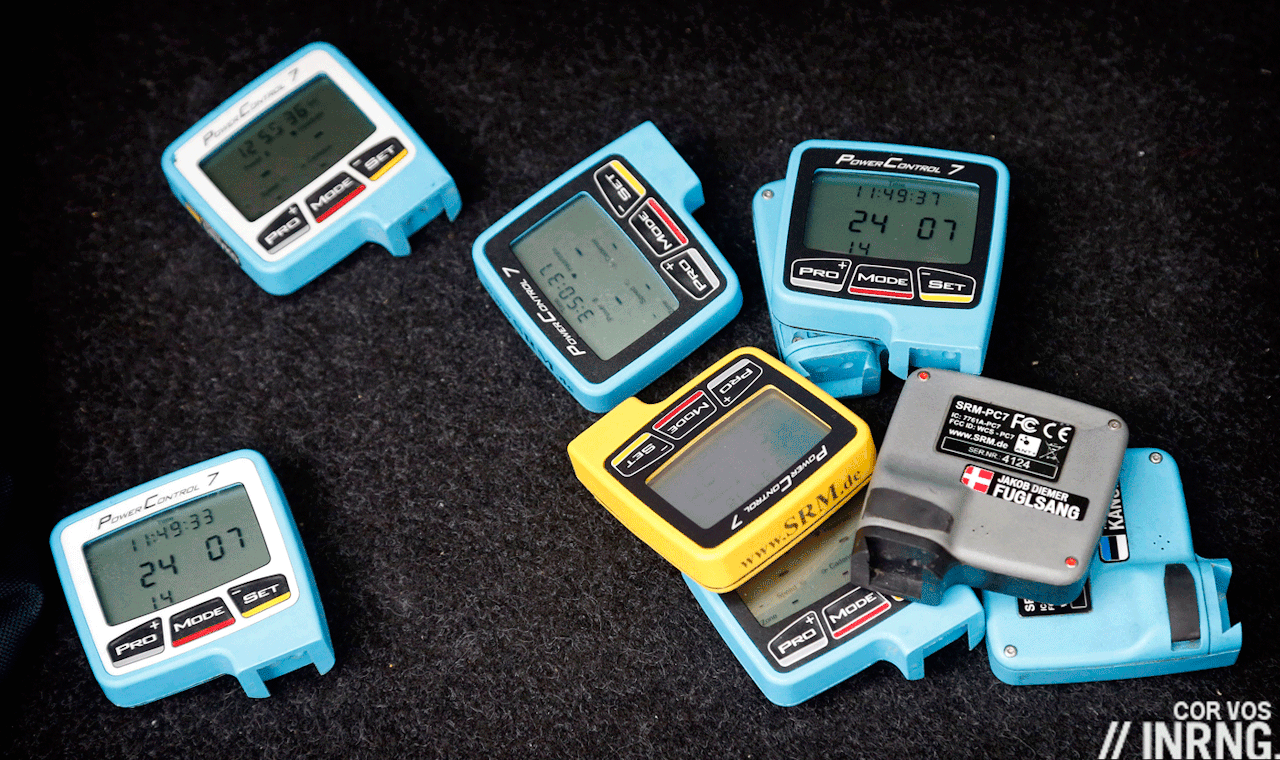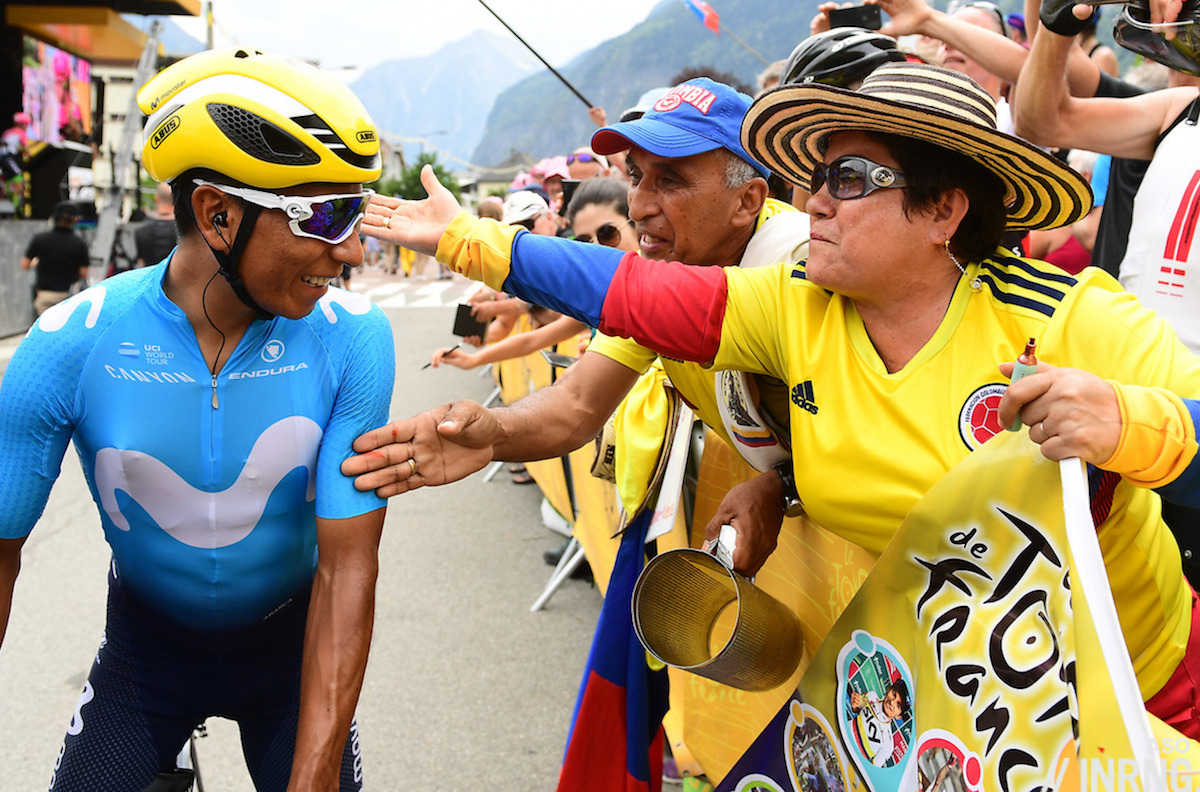“You’re only as good as your last race” is cycling’s version of “what have you done for me lately?” and Team Ineos’s selection for the Tour de France is a clear demonstration. Out go Thomas and Froome, in come Carapaz and Amador.
Tactics
On Banning Powermeters
Tour de France founder Henri Desgrange toyed with format, teams, bikes and more all the time and his spirit lives on the annual suggestions after the Tour de France to make changes to the race and the sport as a whole. His successor Christian Prudhomme says power meters should be banned in racing.
But there’s a risk with the logical fallacy that “something must be done, here’s something, we must do it”. Banning the use of power meters sounds useful but probably isn’t and above all we should be wary of quick solutions.
The Tour’s Team Prize
Nairo Quintana and his Movistar team mates have yellow helmets. It’s because they lead the Tour de France’s team competition and is a visible sign of a largely hidden but sometimes tactically significant prize.
The team prize is the least understood of the official classifications in the Tour de France but it can have a direct tactical influence on the race. With all that’s going on in the race this prize rarely gets any attention but it matters to some.
Only As Good As Fifth
Cycling is an individual sport conducted with teams. Except today where it becomes a team sport and the best rider in the peloton is only as good as the fifth rider on their team. It crosses a subtle line.
Breakaway Management

With the Dauphiné having arrived in a town called Gap what better time to talk about the science and art of managing a breakaway?
Everything about a breakaway says freedom, liberty and space. But as well as a hard physical effort it’s also a tricky game of poker with bluff and counter-bluff and the bigger the race, the greater the tactics.
How Hot is Too Hot?
Anyone for tennis? Players in the Australian Open are getting heatstroke on court and next week sees the Tour Down Under start in Adelaide where it’s even hotter.
Racing in high temperatures brings a new set of challenges and some solutions are set out below. Can it get too hot to race?
Highlights of 2013 – Part III
An obvious pick, Stage 13 of the Tour de France was the day the OPQS and Belkin teams shredded the bunch in the crosswinds. With hindsight it how a hotel booking can alter a race too.
Do Junior World Champions Succeed in the Pro Ranks?
Norway’s Oskar Svendsen is the new junior time trial world champion. Who knows what the future holds for him now but it seems he could well become a force to be reckoned with in the senior ranks in the years to come.
Why? Because it turns out the time trial is a good measure of talent. This might seem obvious yet the road race is a very different story where past winners have flourished, proved mediocre or vanished into cycling obscurity despite the glory of a rainbow jersey.
Here’s a look at the correlation between junior performance and adult success in the time trial and road race. Plus what this means for today’s gold medallist Oskar Svendsen, who isn’t just the world time trial champion, apparently he has the world record for the highest VO2 Max ever recorded.
Vuelta Power Analysis – What the Watts Say
The cheerily-named French website cyclisme-dopage.com has been hosting research by engineer Frédéric Portoleau who estimates the power needed to ride with the leaders over the main mountain passes.
The estimates suggest the Vuelta saw some of the highest power-to-weight numbers of the year. Some will use this to draw conclusions but for me it’s more a tool to analyse the racing.
The Steeper The Climb, The Easier The Race?
With the Giro d’Italia and Tour of California approaching the mountains, a moment to look at the subject of climbing.
There are names that stand out. Zoncolan. Angliru. Perhaps after the summer the Grand Colombier could join the club after the Tour de France climbs it for the first time. These are all steep climbs that are considered so hard that they are used sparingly in the big races, appearing only once every few years.
Of course there are other climbs that appear from time to time too. For example Mont Ventoux in France or the unpaved Colle delle Finestre in Italy but the climbs I’m talking about are famed for their pitch, with double-digit gradients. A ramp to the heavens, a “spaceship for the poor man” as Italian journalist Gianni Brera once wrote.
The names of these are used in whispered tones, as if some are fearful of upsetting the mountain gods. Certainly there is plenty for the riders to get angry about with relentless gradients, often well into double-digit percentages meaning these climbs are the place where three weeks of racing can be decided. They can be so steep cars are not used, instead race officials and mechanics hop onto motorbikes.
But if they are steep they are not hard. Their vertiginous gradients can be tamed by low gearing. Indeed the steepest of climbs can be the most predictable. Here’s a look at why the steepest climbs are not always the best.









